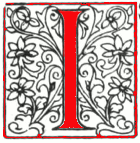In transcribing the following paragraphs from the Internet Archive online version of The Imperial Gazetteer’s entry on Egypt I have divided the long entry into separate documents, expanded abbreviations for easier reading, and added paragraphing and links to material in the Victorian Web. Unless otherwise noted, charts and illustrations come from the original Gazetteer. — George P. Landow

n Cairo there are nine cotton-spinning factories, 10 for weaving silk and cotton, 13 for manufacturing cloth, 14 calico printing-works, 18 dye works, 15 bleacheries, 16 iron- foundries, &c. In the citadel are a factory of small arms and cannon, the latter bronze, and of small calibre; an iron rolling-mill, and the mint.
The principal bazaars of Cairo are the Ghoreah and Khan Khaleel; in the former, cottons, silks, tarbooshes (Fez caps), &c., are sold; in the latter, cloths, dresses, swords, silks, embroideries, &c.; and in both goods are disposed of by public cry or auction. In the Hamzowee, silks, crape, cloth, &c., and most European tissues, are sold; the dealers are all nominal Christians. Some of the bazaars are well covered over, and all their passages are kept cool by watering; and each one is confined to certain classes of goods or wares. The same observation applies to the shops. Those of the Svokereeh, for instance, or sugar quarter, are for sugar, almonds, dried fruit, &c.; the Nahasin, full of coppersmiths; the Khordukleeh, where hardware, cups, coffee-pots, &c., are sold; the Suovjah, occupied by sword-mounters; the Sagha, by gold and silver workers; and the Gohergdeh, by jewellers. The Okalet-el-Gelab or slave market, in the centre of the city, is a large old building, surrounding a large court. The slaves exposed for sale are chiefly from Abyssinia, Nubia, Dongola, and Senaar. Circassians of both sexes are also sold, but these are usually only procured to order.
There were in Cairo, in a recent year, about 24 Moslem foreign merchants; 15 European, but no British, houses; 10 Catholic Greeks , and six Schismatics establishments. In the city were 164 corporated bodies for the regulation or advancement of native trades. But the commerce of Cairo is much diminished. It has ceased to be a depot, as it formerly was, for either articles of export or import. Alexandria, from the greater facility which its position affords, has supplanted it in importance. It is still, however, a great market for gums and some other secondary articles. The stocks of goods in Cairo are consumed principally by the inhabitants of the city, the buyers for the interior finding it more advantageous to supply themselves from the warehouses of the importers at Alexandria. At Cairo are resident consuls from France, Sardinia, and the United States.
Bibliography
Blackie, Walker Grahamiles The Imperial Gazetteer: A General Dictionary of Geography, Physical, Political, Statistical and Descriptive. 4 vols. London: Blackie & Son, 1856. Internet Archive. Inline version of a copy in the University of California Library. Web. 31 July 2020.
Last modified 1 August 2020